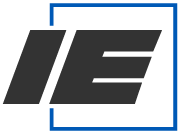By Phillip Blackburn CEO, IE
Interesting news in the Battery Energy Storage (BESS) space this past month with Fluence’s announcement that it is launching a contract manufacturing facility in our HQ state of Utah. This is clearly a delayed competitive response to Tesla’s announcement last year of its “Megafactory”, where Tesla will produce its 4 mWh “Megapacks”.
What insights can we glean from these moves about the direction of the industry? Quite a bit, actually.
First, it shows that Tesla and Fluence view energy storage as a scale game. It also shows they recognize that the winners must have deep and integrated manufacturing capabilities. Consider the following based on the aforementioned press releases:
- Tesla’s Megafactory capacity will reach 40 GWh of product when at capacity. Since Megapacks are 4 MWh each, that equates to annual production of 10,000 units, or 40 per production day. Wow!
- Tesla is advertising a cost of approximately $1.2 million per Megapack, or approximately ~$300/kWh. The Megafactory will thus deliver $12 billion in annual revenue when at capacity. Again, wow!
- Fluence will start with capacity of 75 “Cubes” per week, reaching 150 Cubes/week at full production. Rated at 800kWh each, the factory will reach 6 GWh per year, a large number but only 15% of Tesla’s Megafactory. Interestingly, Energy Storage News reports that the cubes will be manufactured in Asia but will be outfitted and customized in Utah. Thus, while subscale to Tesla overall, it gives them greater scale in their fabrication facilities in Asia, which also produces their significant Asian volumes with a lower cost structure and should allow for the ability to customize that we have seen customers still require.
In comparison, in the program that IE delivered for Terra-Gen’s Sanborn Edwards and Valley Center sites last year, we shipped 158 custom enclosures totaling approximately 1500 MWh (1.5 GWh) of storage capacity over a six month window in 2021. This is a twelve-month run rate of approximately three GWh, which is right in line with the initial production that Fluence plans to hit in its Utah facility, or about half of Fluence’s planned production facility when reaching full capacity.
To put all of this in context, the entire US generating capacity from all power sources is about 1,200 GW. To convert 50% or more of that to renewables over the next 20 years, the US will require a minimum of 600 GW of renewable energy, all of which is intermittent and will therefore almost all require matching storage. Non-Battery storage technologies will also prevail, but assuming Lithium Ion wins a 50% market share of storage, there will need to be at least 300 GW of BESS storage capacity built, or 1200 GWh of capacity with a four-hour solution. Excluding retirements of this capacity, since these solutions are not expected to generally last more than 20-30 years, this is 30 years’ worth of dedicated capacity from Tesla’s 40 GWh factory to provide this much storage. Obviously, this is too long for the transition – California has a mandate of 100% renewable by 2045. While this seems out of reach, other states are lining up behind them and the new Biden renewables investment plan (titled the “IRA”) is another step in providing funding to make this a reality. So even at these massive volumes that Tesla and Fluence are committing to, additional expansion will be required.
While Tesla and Fluence serve the mass market with standardized solutions, the growth will require lots of customized solutions at scale to deliver the required capacity. Thus, we see this as a very healthy growth market over the next 20 years.
Based on the recent announcements from Tesla and Fluence, it seems clear that Tesla is destined for continued market leadership and everyone else will race to catch up. The challenge will be for other providers to reach the economies of scale that will allow them to compete with Tesla’s cost structure. Given the recent expansion of our facilities and our significant manufacturing volumes in markets beyond storage, we expect to continue to leverage those volumes and be a key provider of “scaled custom” solutions for our customer base in the decades to come.
Buckle up and grab some popcorn. This will be a wild ride.


